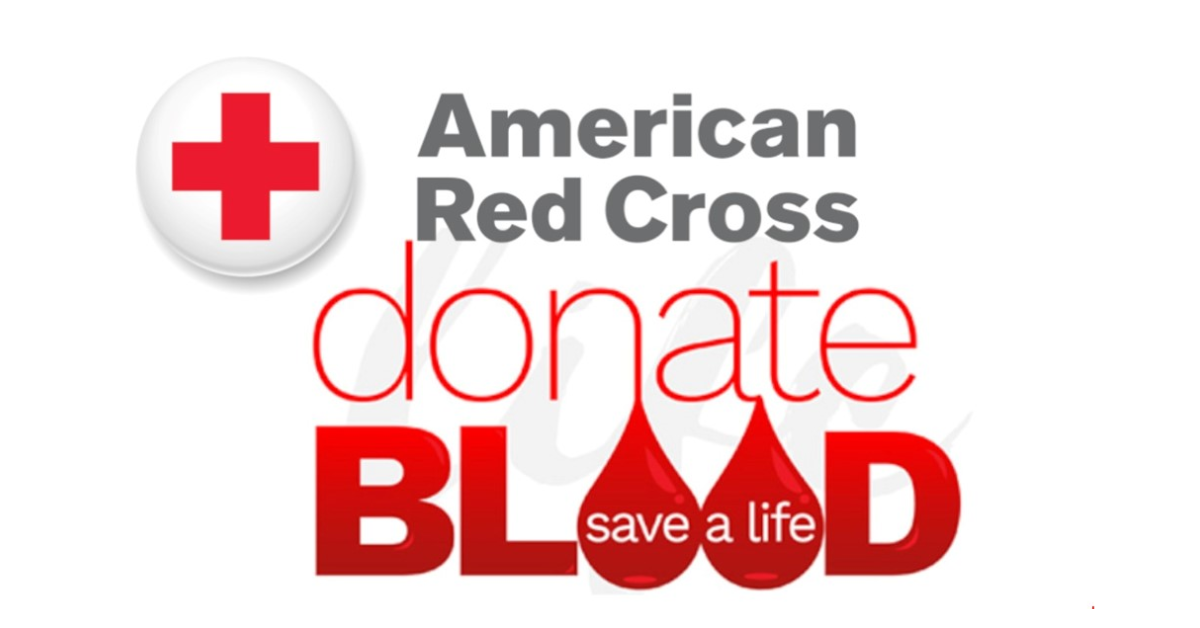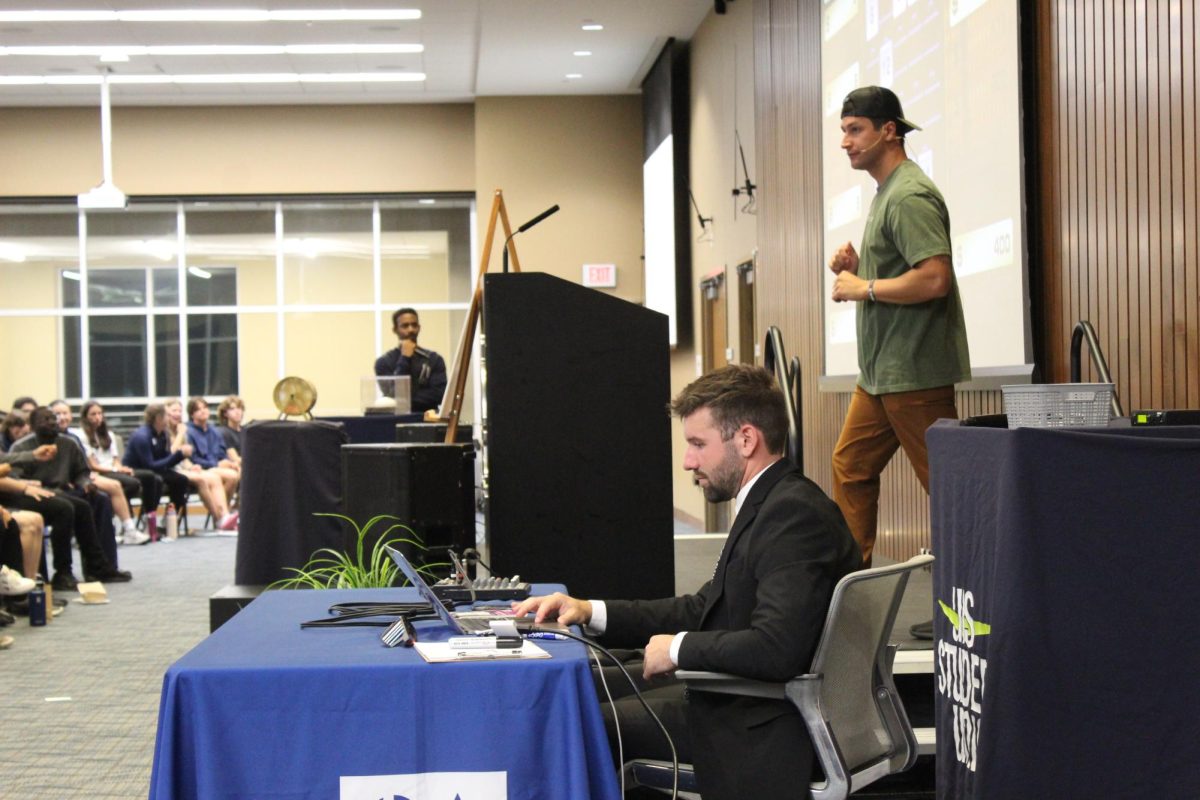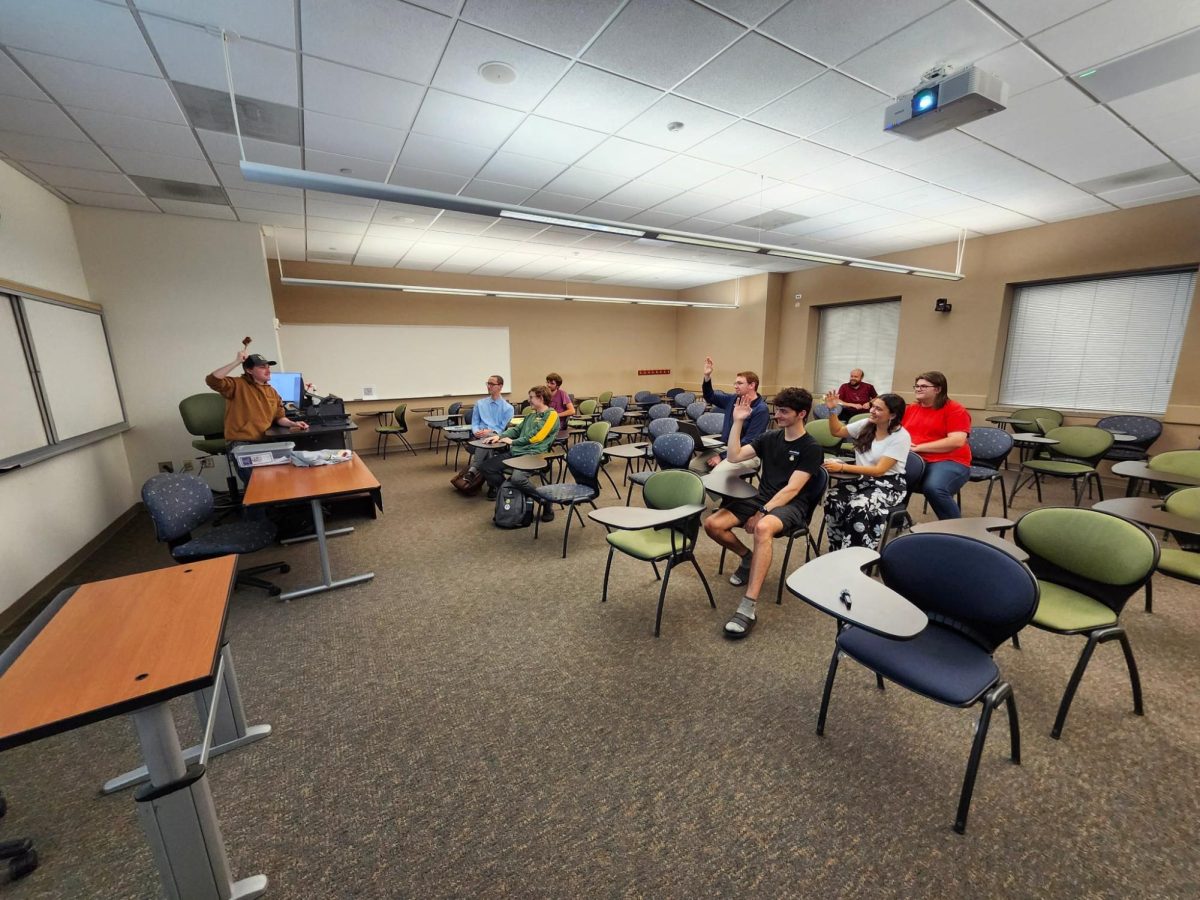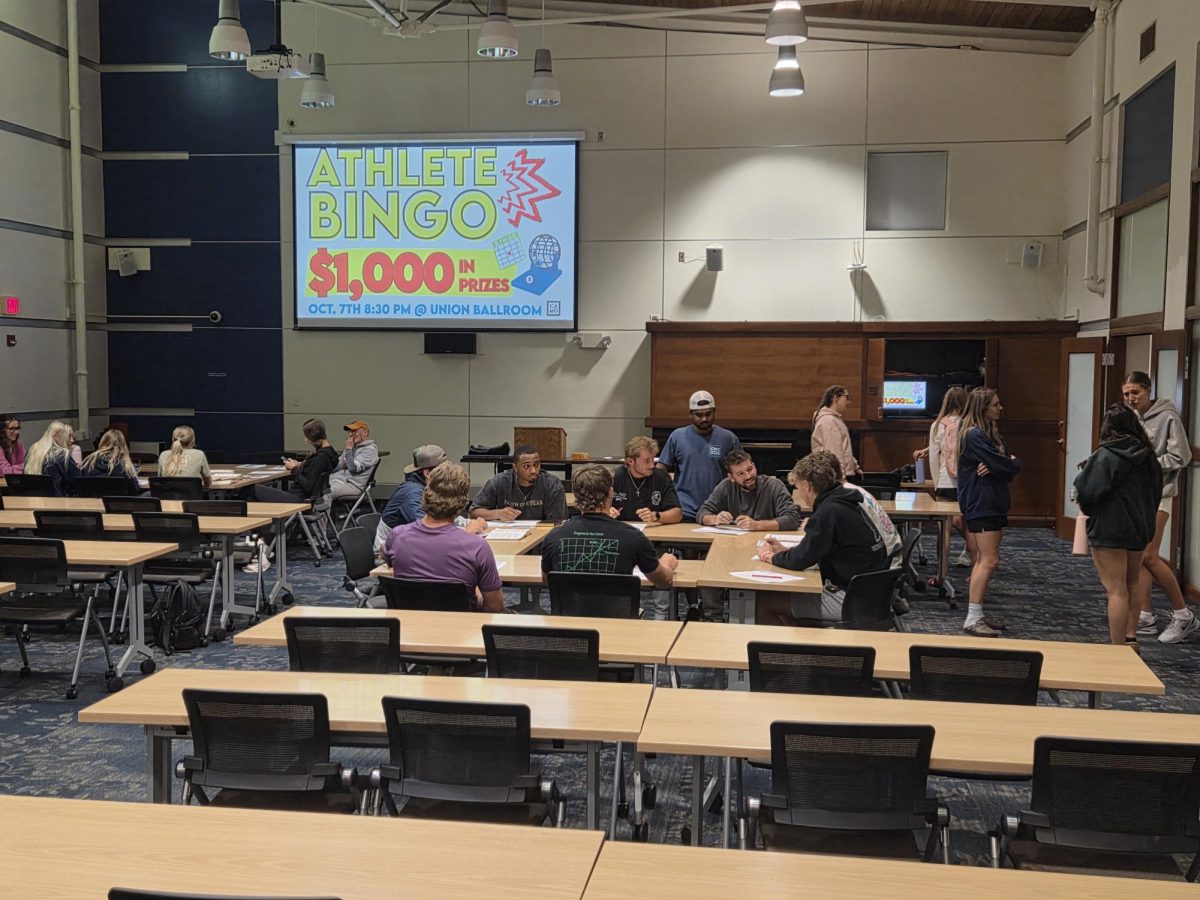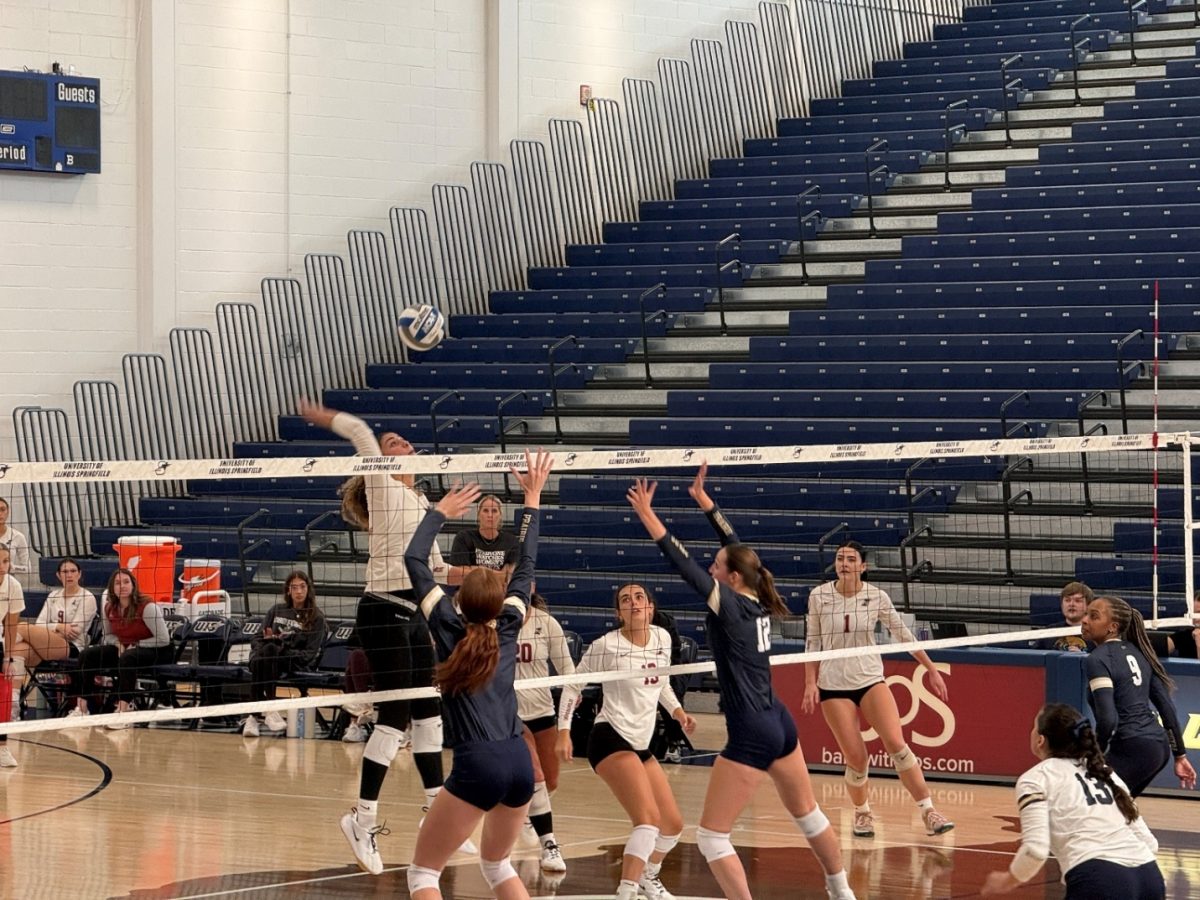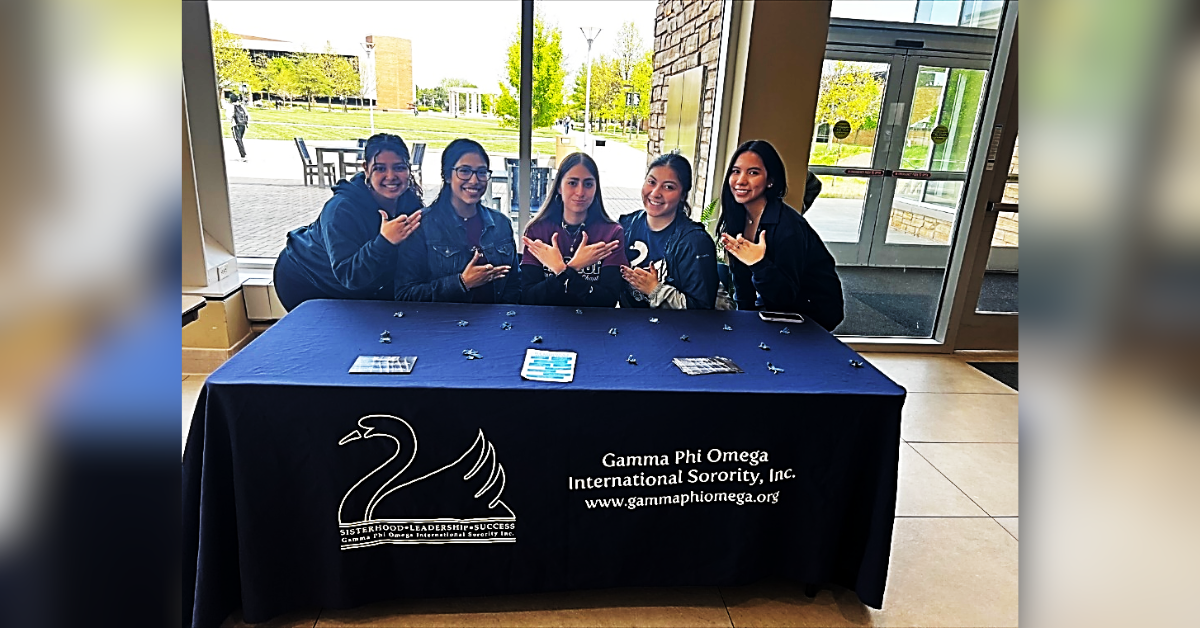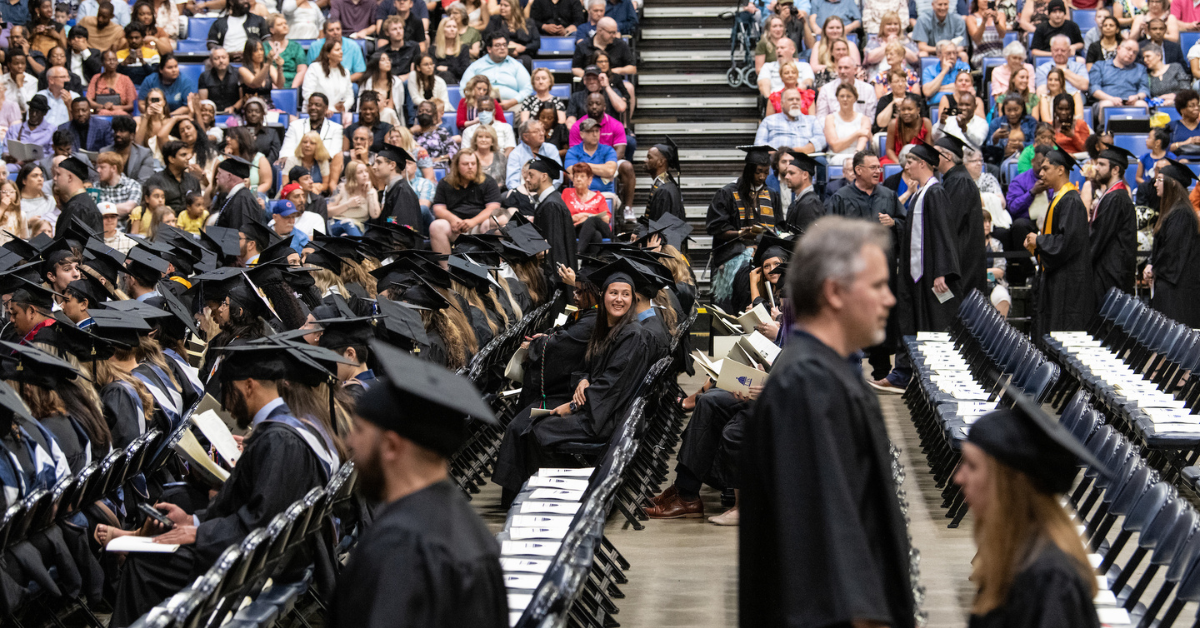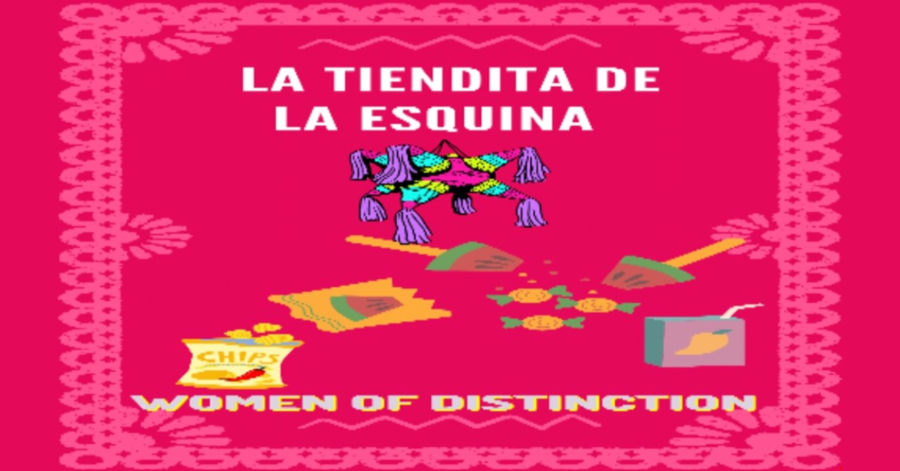SPRINGFIELD— The American Red Cross Blood Drive and (for the first time at UIS) the Gift of Life Bone Marrow Registry were held at the Student Union between 9 a.m. and 2 p.m. on Tuesday, April 18.
According to some officials at the Red Cross, only about 3% of people donate blood. There is a need for diverse people to donate blood. Besides blood being on hand for transfusions, plasma is a crucial ingredient in over 24 life-saving medicines.
Blood is the mixture of liquid plasma, red blood cells carrying nutrients and oxygen, white blood cells fighting infections, and platelets, small disk-shaped cell fragments involved in clotting.
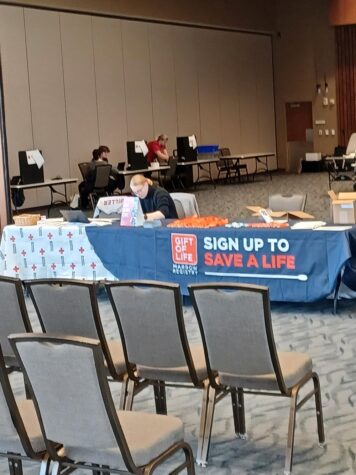
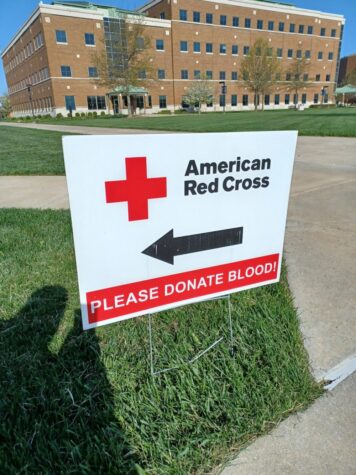
UIS Bio Pre-Med students Franki Miller and McKenna Schmitt maintain the Red Cross table just one flight up from the Starbucks in front of two neat rows of black padded wooden chairs.
There were two types of blood donation possible.
“So we have whole blood, which means you are giving the platelets the red blood cells, everything in the blood. And then there’s a power red donation which means you take out twice the amount of the red blood cells and put back the platelets and the plasma, so we are just taking out the red blood cells. Typically, you have to be over a certain height and weight limit for that,” Schmitt said.
Antigens and antibodies determine blood types. Type A has A antigens and B antibodies, type B has B antigens and A antibodies, type AB has both A and B antigens, and neither antibody and type O has neither antigens nor A and B antibodies. Blood also has what is known as an Rh factor: It either contains a certain protein (+) or it does not (-). This makes eight categories of blood types (Read more HERE).
In the population, from most to least common is type O+(39%), type A+(32%), type B+ (11%), type O- (7%), type A-(6%), type AB+(4%), type B-(2%), and type AB-(1%). Type O- is considered the ‘universal donor,’ and type AB+ is considered the universal receiver.’
Additionally, those with metabolic conditions such as type 2 diabetes, if they are well controlled without insulin shots, are able to donate.
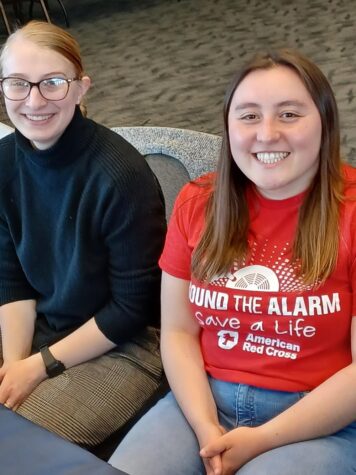
“We also have the bone marrow registry table. We’ve never actually done a bone marrow registry before. It’s our first time trying it with Gift of Life.” Miller said. The Gift of Life is a nonprofit bone marrow, and blood stem cell registry that facilitates organ and tissue transplants for life-threatening illnesses.
“Essentially, it’s a really simple process. We have someone come up if they’re interested, and they have three swabs. They just swab their cheeks for ten seconds per swab and put it in an envelope,” Miller said. “They’ll be added to the registry, and they are not committed, and at any time, they could opt out.”
Students and community members all share a sense of altruism around the blood drive.
“I have a special blood type, and that blood type is very useful. I mean, people need it, and that’s why I decided to donate. I think while I’m donating, I may be saving lives somewhere,” said John Guimking, who had just donated.
“I just want to give back to my community and help out any way I can,” Andrew Ogunmokun said.
To give blood with the American Red Cross, click HERE
To join the registry of the Gift of Life, click HERE

